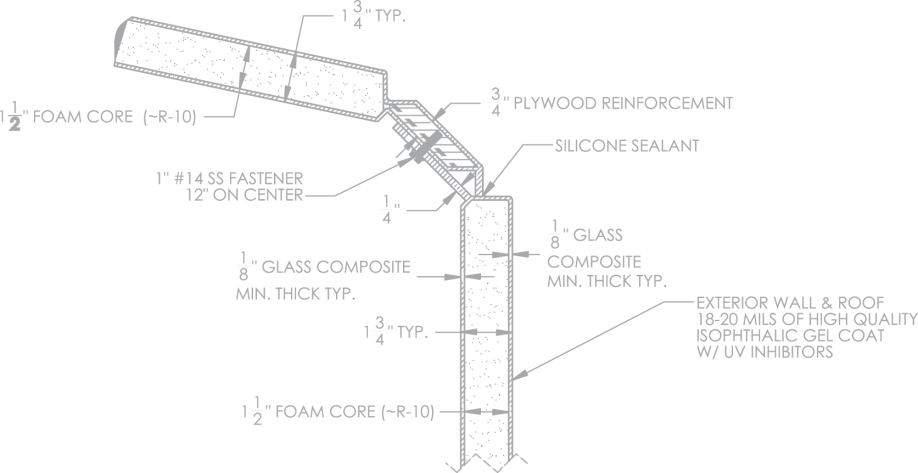High-Performance Composites for Eco-Friendly Building
High-Performance Composites for Eco-Friendly Building
Blog Article
From Waste to Wonder: Exactly How Recycled Composites Are Transforming Various Applications
As sectors worldwide are progressively prioritizing sustainability and environmental responsibility, the usage of recycled composites has emerged as a transformative solution across various markets. From boosting the performance of auto parts to supplying sustainable alternatives in building materials, the applications of recycled composites are vast and encouraging.
The Rise of Recycled Compounds
The raising fostering of recycled composites in different markets mirrors an expanding acknowledgment of their ecological and economic advantages. Recycled compounds, stemmed from materials such as reclaimed carbon fiber or recycled plastics, offer a lasting option to standard materials without jeopardizing on efficiency. Industries varying from automobile and building and construction to aerospace and durable goods are significantly turning to recycled compounds to satisfy their manufacturing needs.
One secret driver behind the rise of recycled composites is the push in the direction of sustainability and eco-friendliness. Companies are under boosting stress to decrease their carbon footprint and decrease waste generation. Recycled composites give an option by utilizing materials that would otherwise end up in land fills, thereby advertising a round economic situation.
Furthermore, the financial advantages of utilizing recycled compounds can not be disregarded. These products are typically a lot more affordable than their virgin counterparts, using companies a method to reduce production costs without compromising quality. As developments in recycling innovations remain to improve, the adoption of recycled compounds is expected to additional boost throughout varied markets.
Benefits in Automotive Industry

Lasting Solutions in Construction
Including sustainable practices in building projects is vital for decreasing environmental influence and promoting lasting viability in the constructed setting. With the building and construction industry being just one of the largest contributors to carbon emissions and waste generation around the world, the adoption of sustainable options is vital in reducing these adverse effects. Recycled composites are playing a considerable duty in revolutionizing building and construction practices by using a more eco-friendly option to typical building materials.
Recycled composites, stemmed from materials such as recovered wood, rubber, and plastic, provide a lasting alternative for various construction applications. These products not only aid in lowering waste however also offer versatility, toughness, and toughness equivalent to standard building and construction materials. By including recycled composites right into structure layouts, construction jobs can contribute to source conservation and power performance while maintaining high performance requirements.
Additionally, making use of recycled composites in building and construction straightens with the growing demand for environment-friendly buildings and lasting infrastructure. As environmental regulations become more stringent and the focus on sustainability heightens, the building and construction industry is increasingly turning to recycled composites as a practical service for creating eco-conscious buildings and structures.
Eco-Friendly Innovations in Packaging
Eco-friendly products such as mushroom packaging, seaweed-based films, and compostable plastics supply promising solutions to the plastic pollution crisis. These innovative materials not just decompose normally, decreasing ecological influence, yet likewise offer comparable functionality and sturdiness to typical product packaging choices.
Additionally, advancements in technology have brought about the development of wise product packaging services that prolong product life span and decrease food waste. Time-temperature signs, oxygen scavengers, and antimicrobial packaging help keep item freshness and top quality, guaranteeing a longer life span without the demand for damaging chemicals. Additionally, the combination of recycled products into packaging production processes additionally boosts sustainability efforts. By including post-consumer recycled material, business can minimize the need for virgin products, save natural resources, and promote a circular economy in the product packaging industry. These environment-friendly advancements in packaging not only profit the atmosphere but also reverberate with consumers who are progressively looking for lasting products.
Changing Textiles With Recycled Composites
In the realm of lasting materials, the emphasis currently changes towards transforming textiles with the ingenious use of recycled compounds. This development in textile manufacturing is driven by the pushing demand for even more green methods in the fashion and textile sectors. Recycled compounds offer an appealing remedy by integrating materials like plastics, carbon fiber, and glass fiber to develop functional and resilient textiles.
Among the key advantages of utilizing recycled compounds in fabrics is the More Info capacity to repurpose waste products that would or else finish up in land fills. By integrating recycled aspects right into textiles, producers can minimize their environmental impact and add to a much more round economy - composites. In addition, textiles made from recycled composites commonly show improved toughness, performance, and longevity features, making them suitable for a large range of applications
As consumer demand for sustainable items remains to climb, the fostering of recycled composites in textiles is positioned to grow significantly. This shift in the direction of even more ecologically pleasant fabric manufacturing not just profits the world yet additionally opens up brand-new opportunities for technology and creativity in the style and fabric markets.
Final Thought

From boosting the performance of auto parts to offering sustainable alternatives in building materials, the applications of recycled compounds are vast and promising. Recycled compounds, acquired from products such as reclaimed carbon fiber or recycled important link plastics, provide a lasting option site to standard products without compromising on performance. Additionally, the use of recycled compounds advertises the round economic situation by diverting waste from landfills and reducing the need for virgin raw materials - composites.Recycled compounds, obtained from materials such as redeemed wood, rubber, and plastic, provide a lasting alternative for numerous building and construction applications.In the world of lasting products, the emphasis now moves towards changing fabrics with the cutting-edge use of recycled composites
Report this page